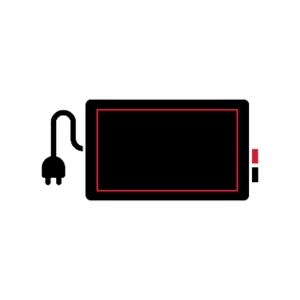Section 1 product and company identification
| Product Name: | Valve Regulated Lead Acid Battery | Phone | 1.778.358.3925 |
| Company Name: | Canbat Technologies Inc. | support@canbat.com | |
| Company Address: | 600-1285 West Broadway, Vancouver BC, V6H 3X8, Canada | Office Hours: | 8 AM – 4 PM PST |
Section 2 composition/information ingredients Pure
chemical □ Mixture ■
| Chemical Ingredient | Molecular | Content | CAS No. |
|---|---|---|---|
| Lead and lead oxide | Pb, PbO2 | 60-70 | 7439-92-1,1309-60-0 |
| Calcium | Ca | <0.15 | 7440-70-2 |
| Tin | Sn | <1 | 7440-31-5 |
| Sulfuric acid | H2SO4 | 10-15 | 7664-93-9 |
| ABS | 5-10 | 9003-56-9 | |
| AGM Separator | 3-4 |
Section 3 hazards summarizing
Classification of Danger: (refer to section 14)
Invasion Route: eyes, skin contact, and ingestion.
Health Hazard:
The valve regulated lead-acid batteries are not hazardous when used according to the instructions of the manufacturer under normal conditions. In case of misuse, there may be a risk of rupture, fire, heat, leakage of internal components, with could cause casualty loss. Contact with internal components may cause irritation or burns to eyes and skin. Misuse include but not limited to the following cases: charged for long time, short circuited, put into fire, whacked with hard object, punctured with acute object, crushed, and broken.
Environmental Hazard
The internal electrolyte may cause adverse environmental impacts if
The Danger of Burning and Exploding
May occur fire or explosion in high temperature or short circuit.
Section 4 first-aid measures
The valve regulated lead acid batteries are not hazardous with eye and skin contact under normal circumstance. In case of internal hazardous substance leaking, the following measures should be taken if body parts come in contact with these substance:
AFTER SKIN CONTACT
Immediately wash skin with soap and copious amounts of water.
AFTER EYE CONTACT
Flush eyes with clean water for 15 minutes while lifting eyelids. Get prompt medical attention.
AFTER INHALATION:
Inhale fresh air. If not breathing, give artificial respiration. If breathing is difficult, give oxygen.
AFTER INGESTION:
If swallowed, wash out mouth with water provided person is conscious. Call a physician.
Section 5 fire-fighting measures
- Characteristics of Hazard: Toxic fumes; gases or vapors may evolve on burning.
- Hazardous Combustion Products: CO, CO2, acid, hydrogen and oxygen gas.
- Fire-extinguishing Methods: Carbon dioxide, dry chemical powder, or appropriate foam.
- Attention in Fire-extinguishing: Wear anti-gas masks and full fire-fighting suits.
Section 6 accidental release measures
If the battery is misused and leakage occurs, liquid could be absorbed with sands, earth, or other inert substance, and the contaminated area should be ventilated in the meantime. Damaged batteries that are not hot or burning should be placed in a sealed plastic bag or container.
Section 7 handling and storage
Handling: Do not handle the batteries in a manner that allows terminals to short circuit Storage: Store and used far away from heat, sparks, open flame, or other heat ignition sources, and under room temperature (<30℃) in ventilating and dehumidifying environments.
Section 8 exposure controls/personal protection
Maximum Allowable Concentration: No Standard available Engineering Controls: No engineering controls are required for handling batteries that have not been damaged. Personal protective equipment for damaged batteries should include chemical resistant gloves and safety glasses.
Section 9 Physical and Chemical Properties
Not applicable to our products
Section 10 stability and reactivity
Stability: Stable under normal temperatures and pressures.
Incompatibility: Oxidizing agents
Conditions to Avoiding: Heat and open flame, short circuit, and water
Hazardous polymerization: Will not occur
Decomposition Products: CO, CO2, acid, hydrogen and oxygen gas
Section 11 toxicological information
VRLA batteries do not elicit toxicological properties during routine handling and use.
Section 12 ecological information
Ecological toxicity: N/A
Biodegradability: N/A
Non-biodegradability: N/A
Section 13 disposal
- Waste Treatment: Recycle or dispose of batteries in accordance with local regulations.
- Attention for Waste Treatment: Deserted batteries couldn’t be treated as ordinary trash. Couldn’t be thrown into fire or placed in high temperature. Batteries must not be dissected, pierced, crushed or treated similarly. Best way is recycling.
Section 14 transport information
UN NO. N/A
Proper shipping name: N/A
Packing group: N/A
| ICAO/IAT | IMDG CODE | DOT |
|---|---|---|
| Not- regulated | Not- regulated | Not- regulated |
| Can be shipped by air in accordance with International Air Transport Association(IATA), DGR Packing Instructions(PI), PI872 appropriate and Special Provision A67 | International Maritime Organization(IMO) under Special Provision 238 | Non-Spillable Battery complies with provisions listed in 49 CFR 173.159(d), therefore must not be marked with an ID number or hazardous label and is not subject to hazardous shipping paper requirements. |
Section 15 regulatory information
Recommendations on the transport of dangerous goods-model regulations (15th revised), IATA dangerous goods regulations, International Maritime Dangerous Goods Code, U.S. Hazardous Material Regulations
Section 16 other information
The information above is believed to be accurate and represents the best information currently available to us. However, we make no warranty of merchantability or any other warranty, express or implied, with respect to such information, and we assume no liability resulting from its use. Users should make their own investigations to determine the suitability of the information for their particular purposes.
DO YOU HAVE ANY QUESTIONS ABOUT THE MSDS?
Whether you have a question about the material safety data sheet (MSDS) or whether you are looking for other information, please feel free to complete the form below to contact our battery experts. We would love to hear from you and we look forward to your enquiry.










